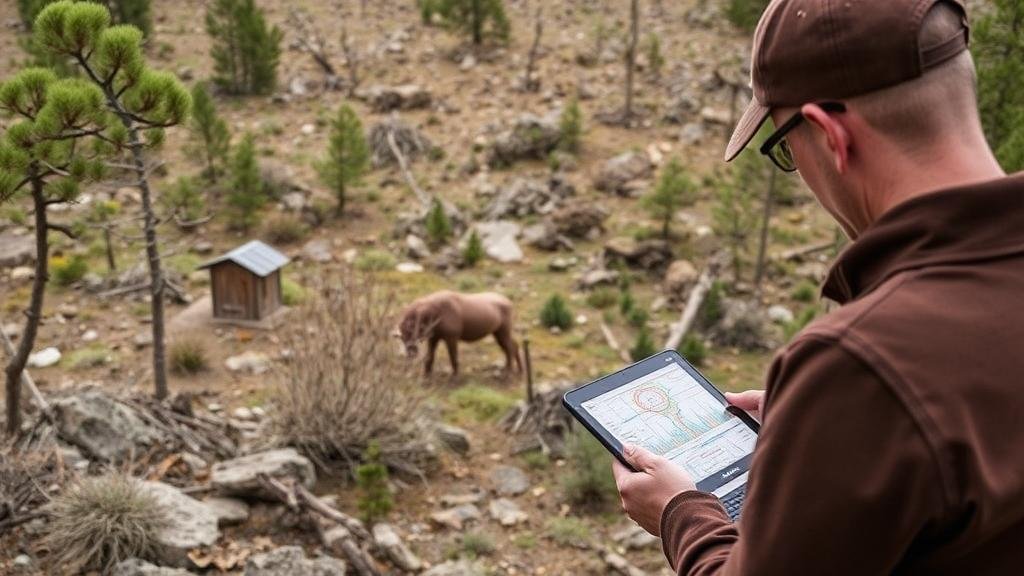Using GPS and Maps to Locate Old Mining Claims
Using GPS and Maps to Locate Old Mining Claims
The exploration of old mining claims can prove to be a lucrative endeavor for prospectors and historians alike. With the integration of technology, particularly GPS and digital mapping tools, the task of locating these claims has become more manageable and precise. This article outlines the methods and techniques to effectively utilize GPS and maps in the search for old mining claims.
Understanding Mining Claims
Mining claims are legal declarations of the right to extract minerals from a designated piece of land. In the United States, mining claims are administered by the Bureau of Land Management (BLM). The two primary types of mining claims are:
- Lode Claims: Typically associated with hard rock mining, these claims cover mineral deposits that are fixed in place.
- Placers Claims: These are related to the mining of minerals that have loosened and have accumulated in sedimentary deposits, such as gold found in riverbeds.
Knowledge of these claims is essential for potential miners, as they determine where mineral extraction is legally permissible.
The Role of GPS in Locating Mining Claims
Global Positioning System (GPS) technology allows users to pinpoint precise geographical locations using a network of satellites. By harnessing this technology, prospectors can navigate to specific coordinates associated with historical mining claims. This is how it works:
- Data Acquisition: Extracted data from governmental databases, such as those from the BLM, provides the geographic coordinates of mining claims.
- Mapping Software: Utilizing GIS (Geographic Information Systems) software such as ArcGIS or QGIS allows miners to visualize the claims on a digital map.
For example, an analysis of freed available data from the BLM may reveal a gold lode claim in the Sierra Nevada region, with exact GPS coordinates that can be entered into a handheld GPS device or smartphone app.
Integrating Traditional Maps with Modern Technology
Although GPS technology is advanced, traditional topographic and geological maps remain invaluable tools. These maps provide context about the terrain and the geological features that can affect mining operations. Here’s how to combine both mediums effectively:
- Overlaying GPS Data: Traditional maps can be scanned and overlaid with GPS data to show historical mining claims in relation to current topological features.
- Understanding Land Use: Consulting USGS topographic maps alongside GPS coordinates helps prospectors gauge accessibility and land use restrictions.
For example, an old mining site located near a protected area may pose legal challenges, and topographic maps help in assessing the implications of such locations.
Case Study: Locating the Gold Rush Claims in California
The California Gold Rush of the mid-19th century resulted in numerous mining claims scattered across the Sierra Nevada foothills. By combining modern GPS technology with historical data, researchers and amateur prospectors have effectively located many of these old claims. A notable project involves mapping out the historical routes used during the Gold Rush, allowing users to trace paths of claims that have since been abandoned.
Using digital mapping tools, volunteers collaborated to digitize claim data from old maps, which aided in creating a comprehensive database accessible through mobile GPS devices. This process has not only revived interest in historical mining but has also contributed to local tourism and education regarding California’s mining heritage.
Conclusion and Actionable Takeaways
Locating old mining claims using GPS and maps is a multifaceted process that requires an understanding of both technology and historical context. By leveraging GPS technology in conjunction with traditional maps, individuals can enhance their search for valuable mineral deposits while respecting legal boundaries. Here are actionable takeaways for prospective miners:
- Research mining claims through the BLM’s online database and obtain GPS coordinates.
- Overlay GPS data on traditional maps to visualize historical claim locations.
- Use GIS software for enhanced mapping capabilities.
- Stay informed about local regulations that might affect mining operations.
Understanding and utilizing these tools can transform the often daunting task of locating old mining claims into a more strategic and rewarding venture.


